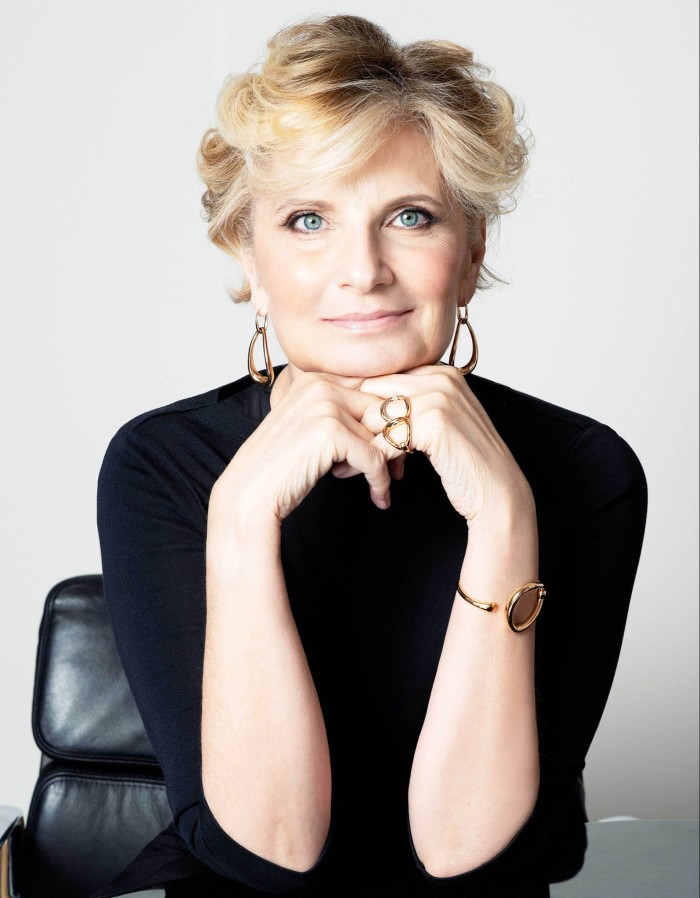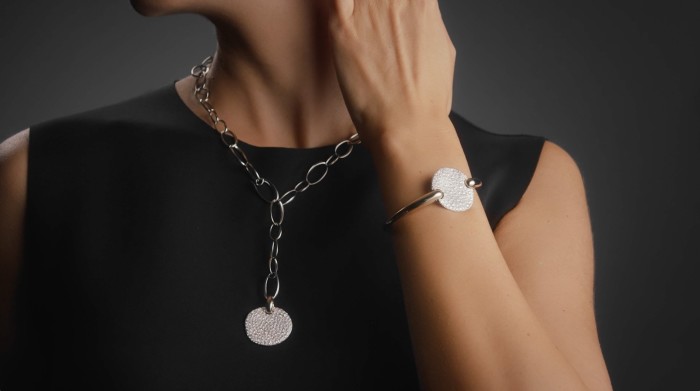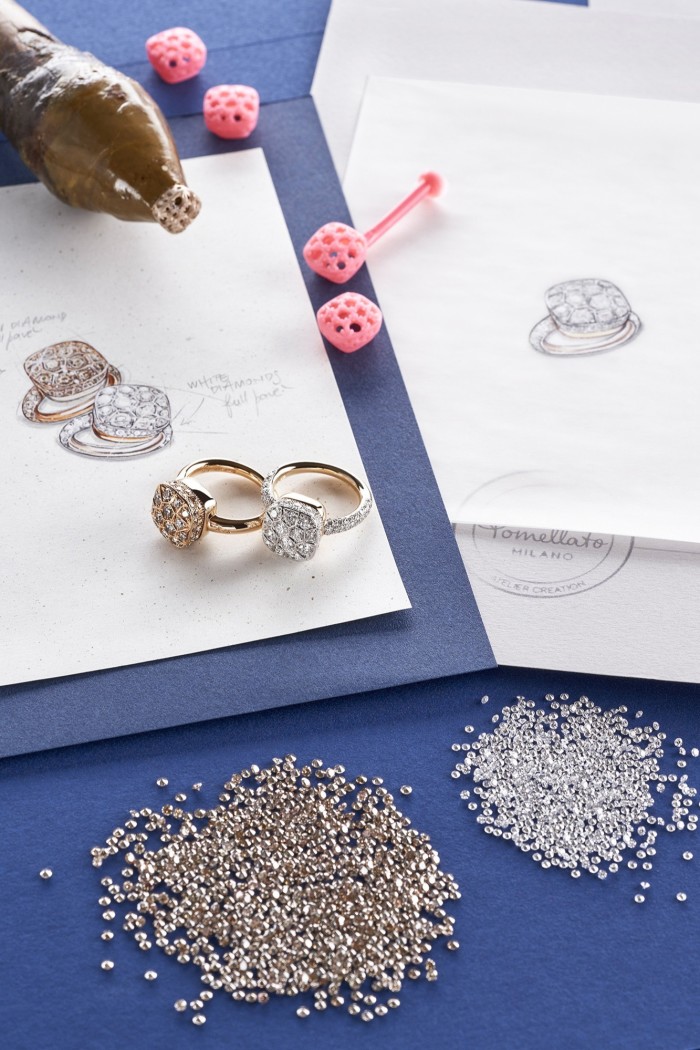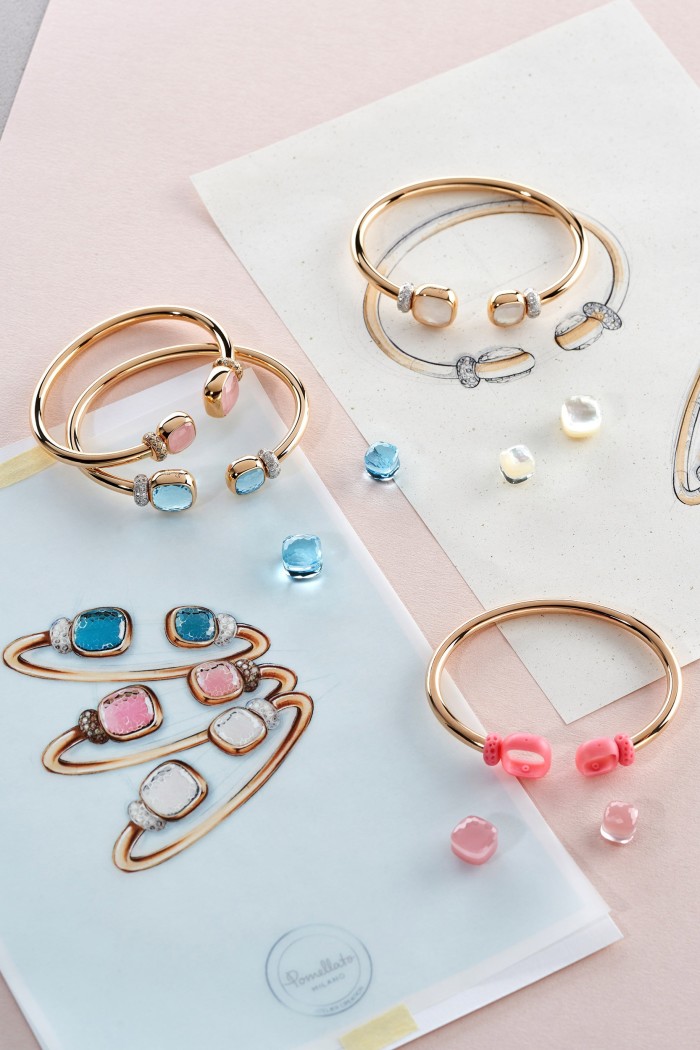Sabina Belli: ‘Women’s empowerment is our primary purpose’

Roula Khalaf, Editor of the FT, selects her favourite stories in this weekly newsletter.
French author Antoine de Saint-Exupéry is better known for inspiring children’s dreams rather than guiding managers. But, fresh in her first role as chief executive of Italian jewellery house Pomellato in 2015, Sabina Belli says she turned to The Little Prince’s author for advice.
“To build a boat, you first need to inspire the desire for the sea,” says Belli, paraphrasing de Saint-Exupéry, to sum up the shift in mindset needed to turn a family-led, Italy-focused business into a global jewellery player within luxury conglomerate. Multi-brand owner Kering bought Pomellato in 2013.
Alongside building a new corporate culture, Belli focused on amplifying Pomellato’s assets — clean designs of understated elegance set with pastel-toned gems — and defining what Belli calls a “Milanese look”.
An ongoing partnership with the goldsmith course at the Milan-based professional school Galdus provides Pomellato with a regular influx of young interns who can be offered full-time goldsmith masters jobs.
Overall, Belli has seen 100 new employees join in the past year, 58 per cent of whom are under 35.
Belli began her own career in advertising at WPP and managed brands such as Christian Dior Parfums, Veuve Clicquot Ponsardin and, later, Bulgari. Since joining Pomellato, she has directed advertising efforts in promoting the brand’s most recognisable Italian-worded styles. These include Sabbia [sand], made of an irregular pavé setting of auburn-toned diamonds; Nudo [naked], set with semi-precious stones in portrait cut unencumbered by prongs; and Iconica, chunky tapered chains.

Earlier this year, Pomellato partnered with Japanese artist Maya Higuchi in order to recompose cracked gems with golden lacquer — a technique known as kintsugi. More recently, a capsule collection of rings made of porphyry marked the brand’s support for the restoration of St Mark’s Basilica in Venice, which was damaged during the 2019 floods.
Last month, the exhibition Pomellato from Milan to Tokyo, in the Japanese capital, curated by renowned jewellery author Alba Cappellieri, celebrated the “Milanese style” embodied by Pomellato by retracing its heritage and juxtaposing jewellery to objects designed by the likes of Gio Ponti.
But, most notably, in 2017, for its 50th anniversary, Pomellato debuted its Pomellato for Women programme to promote inclusion, diversity and empowerment, which has since become the primary purpose for the brand.
“More than 80 per cent of our clients are women who buy for themselves with their credit cards and their own money,” says Belli. That figure, combined with the brand’s 75 per cent female workforce, instilled in Belli a sense of duty to protect and raise prospects for women.
Celebrities such as Oscar-winning US actress Jane Fonda have supported the Pomellato for Women’s cause.


As for international expansion, Belli could rely on the high-speed network provided by Kering.
“Large luxury conglomerates have significant means, both in terms of human resources and finance,” says Bernstein analyst Luca Solca. “They also have significant cumulated experiences and leverage with key interfaces in the industry — such as prime commercial real estate landlords, key opinion leaders, and publishers.
“This allows large groups to accelerate what already works and to fix what doesn’t quickly.”
Kering has brought a wealth of expertise in developing brands on a global stage, having tripled the turnover at French luxury jeweller Boucheron since acquiring it in 2000.
Under Belli’s tenure, Pomellato has established a solid presence in China, Japan and across the US — through standalone boutiques and corners in malls.
Although Pomellato has so far focused on the entry-price and middle-price jewellery arenas — even with a silver collection for which prices start at £260 — 2020 saw the debut of its first high jewellery collection: La Gioia [joy], imagined by Vincenzo Castaldo, Pomellato’s creative director since 2002.
However, in the past 10 years, new players — notably Dolce & Gabbana, Gucci and Giorgio Armani — have been introducing high jewellery collections, which begs the question: Is there still a place at the high jewellery table?
“The opportunity in the very high-end is material,” says Solca, but he questions whether Kering would be willing to leverage both Boucheron and Pomellato in the high jewellery arena. “The issue is not one of demand but of credibility,” he adds.
Belli remains convinced of Pomellato’s purpose of promoting women’s empowerment, but also sees high jewellery as a means to reach new clients at different price points. “At a time in which the fundamental values of our society have been tested by diseases and wars,” she says, “those who can buy extraordinary things want these to be meaningful.”
Comments